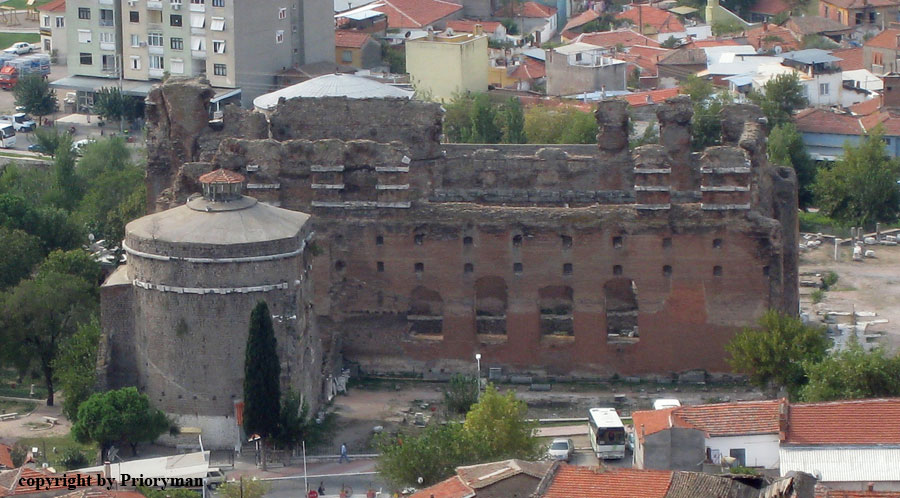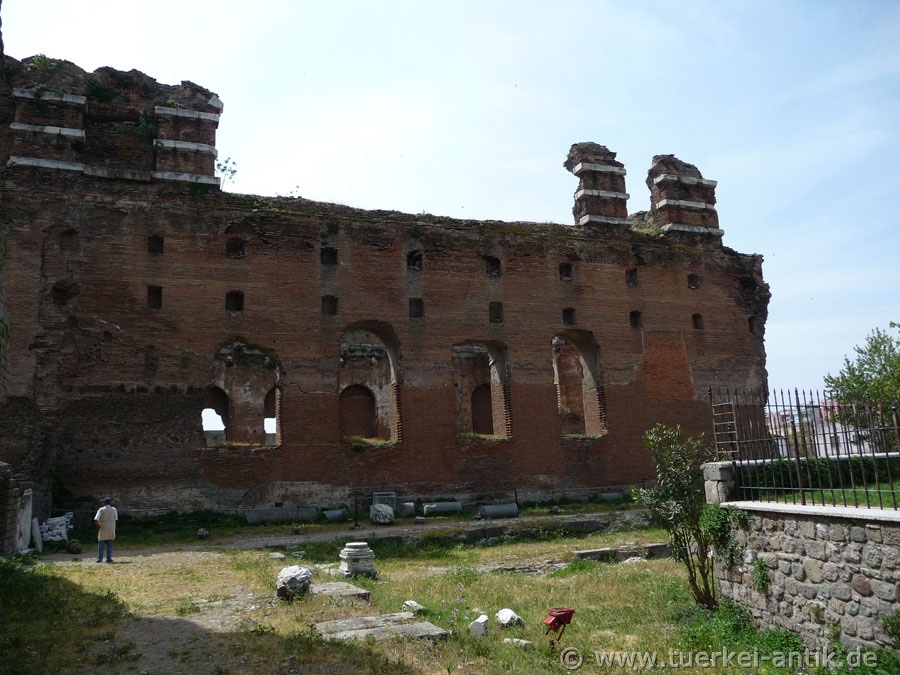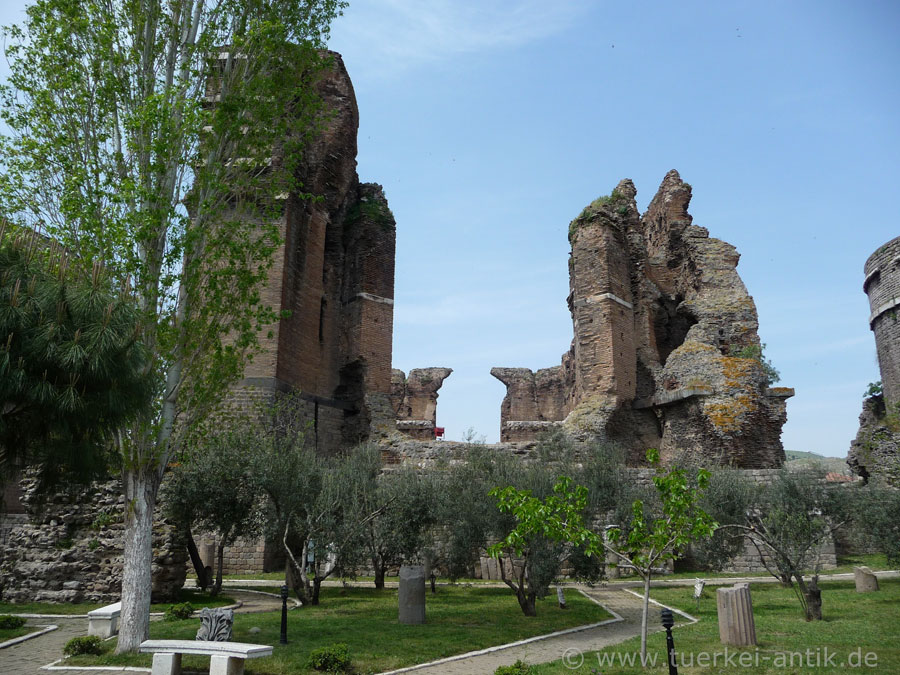 |
|
Ancient temples in Turkey Pergamon |
||||||||||||||||||||
 |
|
|||||||||||||||||||
|
||||||||||||||||||||
|
The Red Hall (Turkish: Kizil Avlu), also known as the Red Basilica, Serapist Temple or Temple of the Egyptian Gods, is the ruin of a 60 × 26 metre brick building over 20 metres high at the foot of the Acropolis Hill of Pergamon, flanked by two towers and with a courtyard in front of it. The site of the associated complex measures about 100 × 265 metres and is thus one of the largest Roman complexes in Asia Minor. The buildings were erected in Roman times, probably under Emperor Hadrian, as temples for Egyptian gods, probably for Isis and Serapis, probably in connection with the Asia Minor god mother Kybele. It is also considered a place of emperor worship. In Byzantine times a three-aisled basilica with an apse on the east side and arcade positions was built into the hall, which was consecrated to John or Paul. |
||||||||||||||||||||
| Serapis, Isis | ||||||||||||||||||||
|
Serapis (also Sarapis) was an Egyptian Hellenistic god who had been established as an integrative imperial god since Ptolemy I. Traits of the Egyptian deities Osiris, the Apis bull (who died in the cult of Memphis and became Osiris), as well as the Greek-Roman main gods Zeus-Jupiter and Hades-Pluto were merged into him. Isis is a goddess of Egyptian mythology. She was the goddess of birth, rebirth and magic, but also the goddess of the dead. She appears for the first time in inscriptions of the Old Kingdom. Together with her husband Osiris and her twin sister Nephthys, she gained popularity and prestige through the so-called Osiris myth and the Isis hymn. Isis was still worshipped by the Greeks and Romans living in Egypt until Christian times. |
||||||||||||||||||||
| The history of Pergamon: | ||||||||||||||||||||
|
|
||||||||||||||||||||
|
|
||||||||||||||||||||
|
|
||||||||||||||||||||
|
|
||||||||||||||||||||
|
|
||||||||||||||||||||
|
|
||||||||||||||||||||
 |
||||||||||||||||||||
|
|
||||||||||||||||||||
| Photos: @chim | ||||||||||||||||||||
| Translation aid: www.DeepL.com/Translator | ||||||||||||||||||||
| Source: Wikipedia and others | ||||||||||||||||||||
|
|




